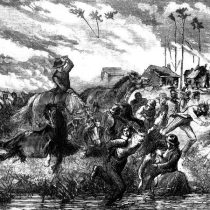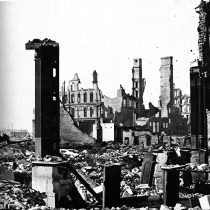Morgan Zdroik graduated from the University of Wisconsin-Whitewater in 2020 with a bachelor’s degree in Public History. She is very excited and eager to begin a career in the Public History field and plans on attending graduate school in the future to become a museum curator or history professor.
By This Author:

OBJECT HISTORY: Peshtigo Fire Breastpin
On the evening of October 8, 1871, the most destructive fire in U.S. history blazed through seventeen towns in northeast Wisconsin. Many of the bodies were so badly burnt they could not be identified. However, Miss Maggie Haney's body was identified by the breastpin still attached to her clothing. The breastpin is currently on display at the Door County Historical Museum and Archives.

The Peshtigo Fire in Williamsville
The village of Williamsonville was first founded by brothers Fred and Tom Williamson who ran Door County’s largest shingle mill. The village was home to 77 residents and sat on less than 10 acres of land at the time of the fire. Most of the residents were either members of the Williamson family or were employees at the mill. Of the 77 residents, 60, including Miss Maggie Haney, were killed by the Peshtigo fire.

Two Fires
Despite being the most disastrous and fatal fire in the history of the U.S., the Peshtigo Fire did not receive much national attention because a similar disaster in a larger city occurred on the same day. On October 8, 1871, the Great Chicago Fire burned for two days destroying thousands of buildings and killing around 300 people.